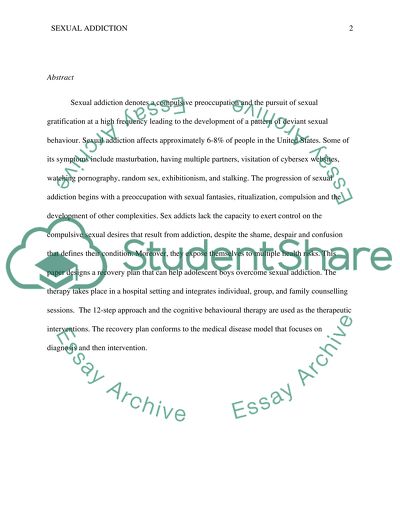Cite this document
(Sex Addiction: Symptoms, Treatment Term Paper Example | Topics and Well Written Essays - 2000 words, n.d.)
Sex Addiction: Symptoms, Treatment Term Paper Example | Topics and Well Written Essays - 2000 words. https://studentshare.org/health-sciences-medicine/1497979-treatment-and-recovery-project-sexual-addiction
Sex Addiction: Symptoms, Treatment Term Paper Example | Topics and Well Written Essays - 2000 words. https://studentshare.org/health-sciences-medicine/1497979-treatment-and-recovery-project-sexual-addiction
(Sex Addiction: Symptoms, Treatment Term Paper Example | Topics and Well Written Essays - 2000 Words)
Sex Addiction: Symptoms, Treatment Term Paper Example | Topics and Well Written Essays - 2000 Words. https://studentshare.org/health-sciences-medicine/1497979-treatment-and-recovery-project-sexual-addiction.
Sex Addiction: Symptoms, Treatment Term Paper Example | Topics and Well Written Essays - 2000 Words. https://studentshare.org/health-sciences-medicine/1497979-treatment-and-recovery-project-sexual-addiction.
“Sex Addiction: Symptoms, Treatment Term Paper Example | Topics and Well Written Essays - 2000 Words”. https://studentshare.org/health-sciences-medicine/1497979-treatment-and-recovery-project-sexual-addiction.


